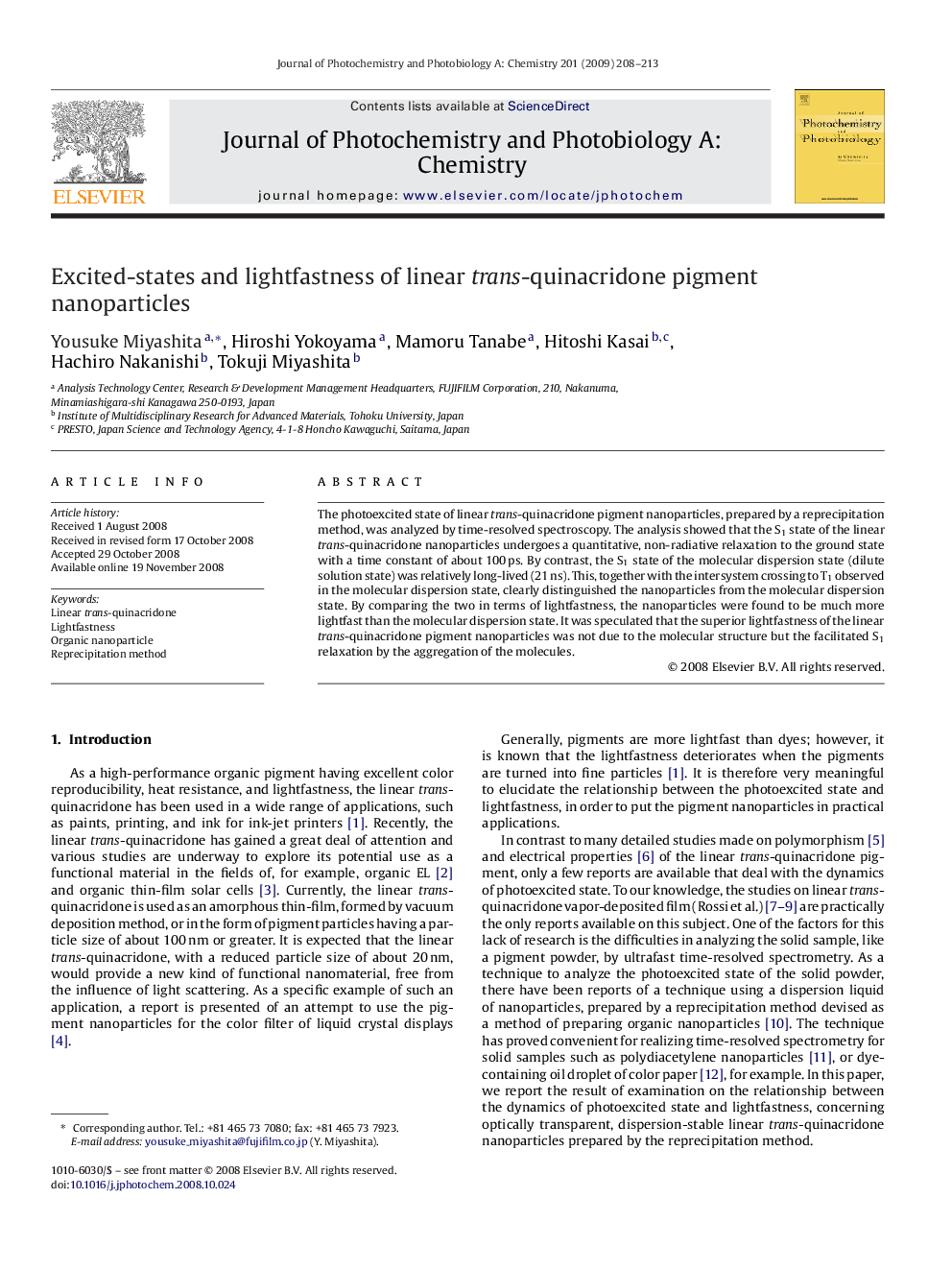| Article ID | Journal | Published Year | Pages | File Type |
|---|---|---|---|---|
| 28966 | Journal of Photochemistry and Photobiology A: Chemistry | 2009 | 6 Pages |
The photoexcited state of linear trans-quinacridone pigment nanoparticles, prepared by a reprecipitation method, was analyzed by time-resolved spectroscopy. The analysis showed that the S1 state of the linear trans-quinacridone nanoparticles undergoes a quantitative, non-radiative relaxation to the ground state with a time constant of about 100 ps. By contrast, the S1 state of the molecular dispersion state (dilute solution state) was relatively long-lived (21 ns). This, together with the intersystem crossing to T1 observed in the molecular dispersion state, clearly distinguished the nanoparticles from the molecular dispersion state. By comparing the two in terms of lightfastness, the nanoparticles were found to be much more lightfast than the molecular dispersion state. It was speculated that the superior lightfastness of the linear trans-quinacridone pigment nanoparticles was not due to the molecular structure but the facilitated S1 relaxation by the aggregation of the molecules.
